Counting gold in Switzerland
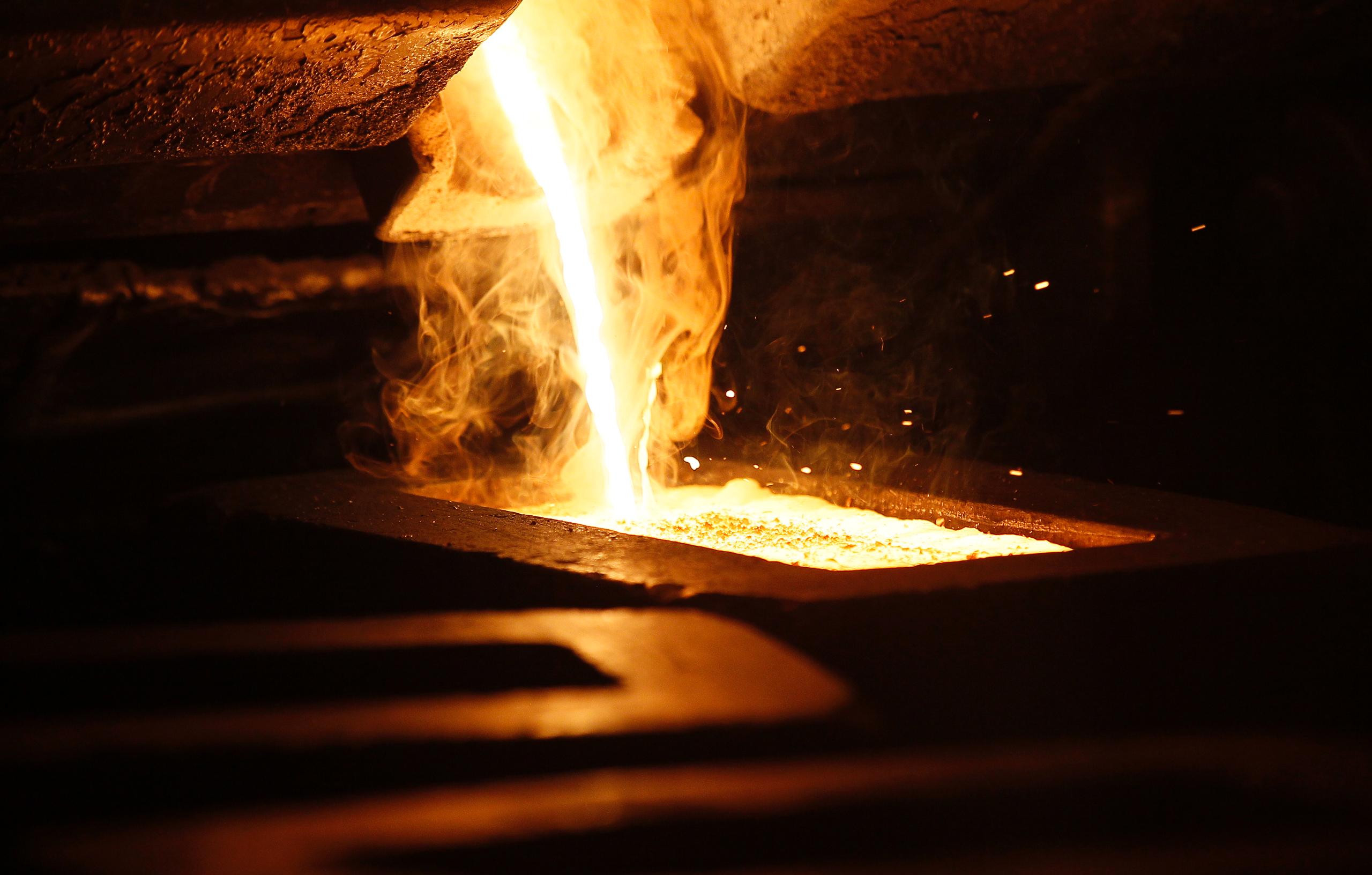
Switzerland conjures up images of watches, chocolate or banks, but not usually of gold. Yet it is the biggest gold trader in the world.
The last goldmine in Switzerland closed for good in 1961, more than 50 years ago. The seam, between Astano and Sessa in Ticino, was fully depleted. Today a few hundred amateur gold panners perpetuate the tradition, primarily in the region of Napf between the cantons of Bern and Lucerne, where it is still possible to find gold deposits.
Yet the absence of this precious metal – and more generally of all raw materials found underground – has not prevented Switzerland from becoming a real force in the business of buying and selling gold. It leads the rankings in the international gold trade with a market share of about 15%, according to 2012 figures from the BACII International Trade Database and the Observatory of Economic Complexity.
The figures provided by these two international institutes, which aim to reconcile statistical methodologies that vary from one country to another and are sometimes based on incomplete information, still do not fully reflect the importance of Switzerland in the gold trade. Figures released by the Federal Customs Administration are more revealing. In 2012, imports increased to 2,200 tonnes, with a value of CHF88 billion ($95.8 billion) and exports rose to 1,500 tonnes (CHF80 billion). In 2014, imports and exports reached a historic record, at 3,500 and 3,900 tonnes respectively – more than the total quantity of gold extracted in a year worldwide (about 2,500 tonnes). However the total values of imports and exports fell as gold depreciated.
Trade evolved dramatically from 2007 after the economic crisis erupted. Gold became an attractive safe-haven investment.
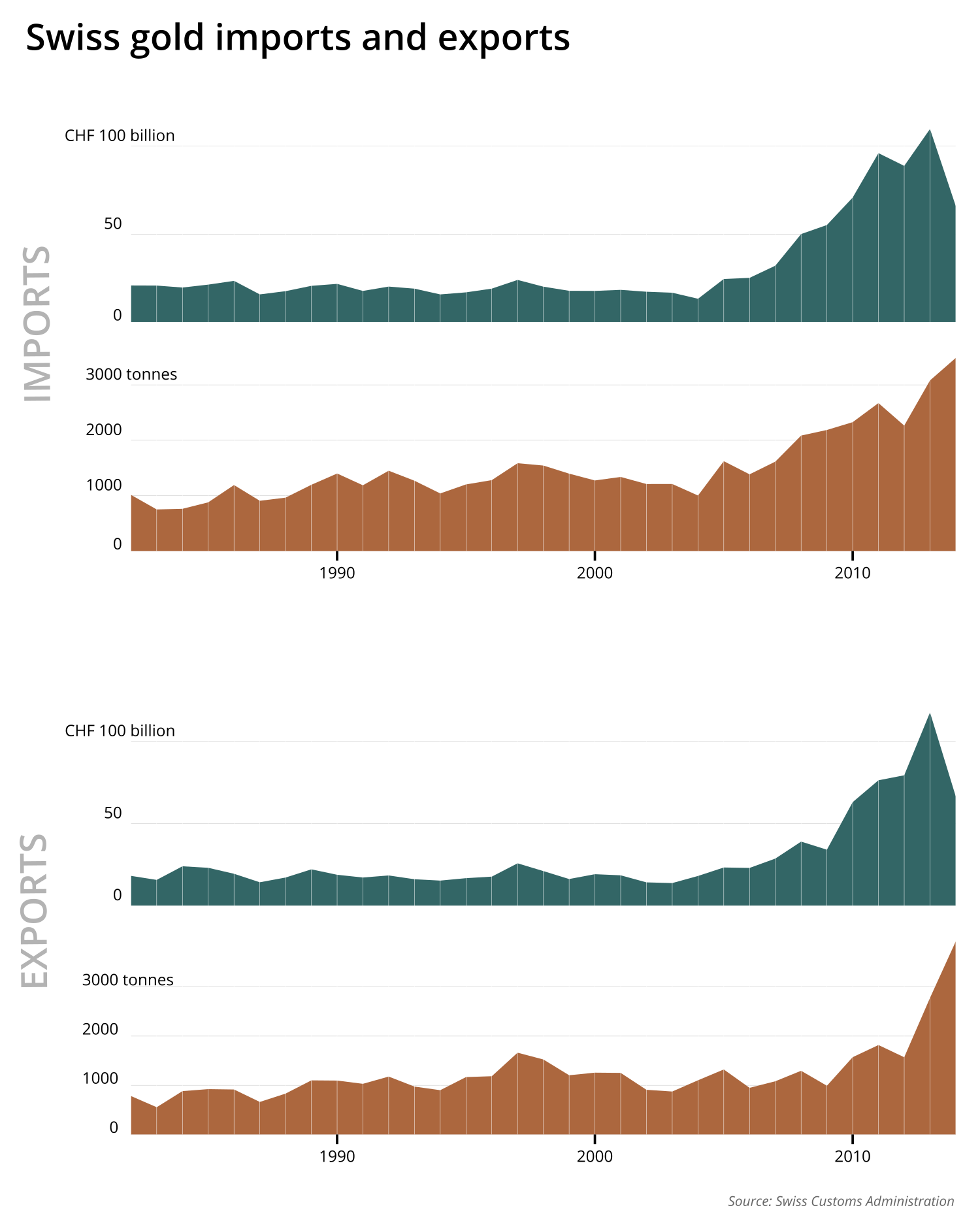
How did Switzerland manage to develop into a top-level platform for the gold trade? Primarily through tradition. The Zurich gold market has always been very important and, until a few years ago, the World Gold Council, the main lobby association for the gold industry, was headquartered in Geneva.
Factors linked to security and efficiency in financial services and logistics also play a role. Another important reason is that four of the biggest gold refineries in the world are based in Switzerland. These facilities refine almost two-thirds of the world’s gold.
For several years, the federal authorities have excluded trade in precious metals from the official foreign trade statistics, because they considered that “the movement of precious metals is more closely related to payment transfers as a substitute for paper money than it is to the movement of commodities to be processed or used,” according to the Federal Customs Administration report of November 2013.
This practice changed in 2014. Today, the Federal Customs Administration publishes statistics about foreign trade that also encompass trade in precious metals and stones.
Taking these transactions into account has completely transformed the whole picture of Swiss trade. Gold represents a good fifth of the value of foreign trade, far ahead of traditional products like medicines or watches.
More transparency in the statistics
Another change in practice was introduced a few months ago. After more than 30 months, the Swiss authorities decided to publish the countries that import and export gold from and to Switzerland.
In 1981, the Swiss government had decided not to make this information public. Several arguments were invoked to justify that decision.
For one, they didn’t want to give too much information to London’s financial centre, the main competitor to Zurich’s.
Another reason was that they wanted to avoid leaking sensitive information, such as the amount of gold imported from the Soviet Union, or from apartheid-era South Africa during the international trade embargo.
The information published in March shows that South Africa was indeed the main supplier of gold until the beginning of the 1990s.
But the statistics do not shed full light on the true countries of origin. The Swiss customs only identify the last transit country. That explains the importance of Britain, given that the London Bullion Market Association (LBMA) is the main global trading centre for gold and silver.
Non-governmental organisations are critical of this fact because it is impossible to know if the yellow metal originates from conflict zones or illegal mines, for example.
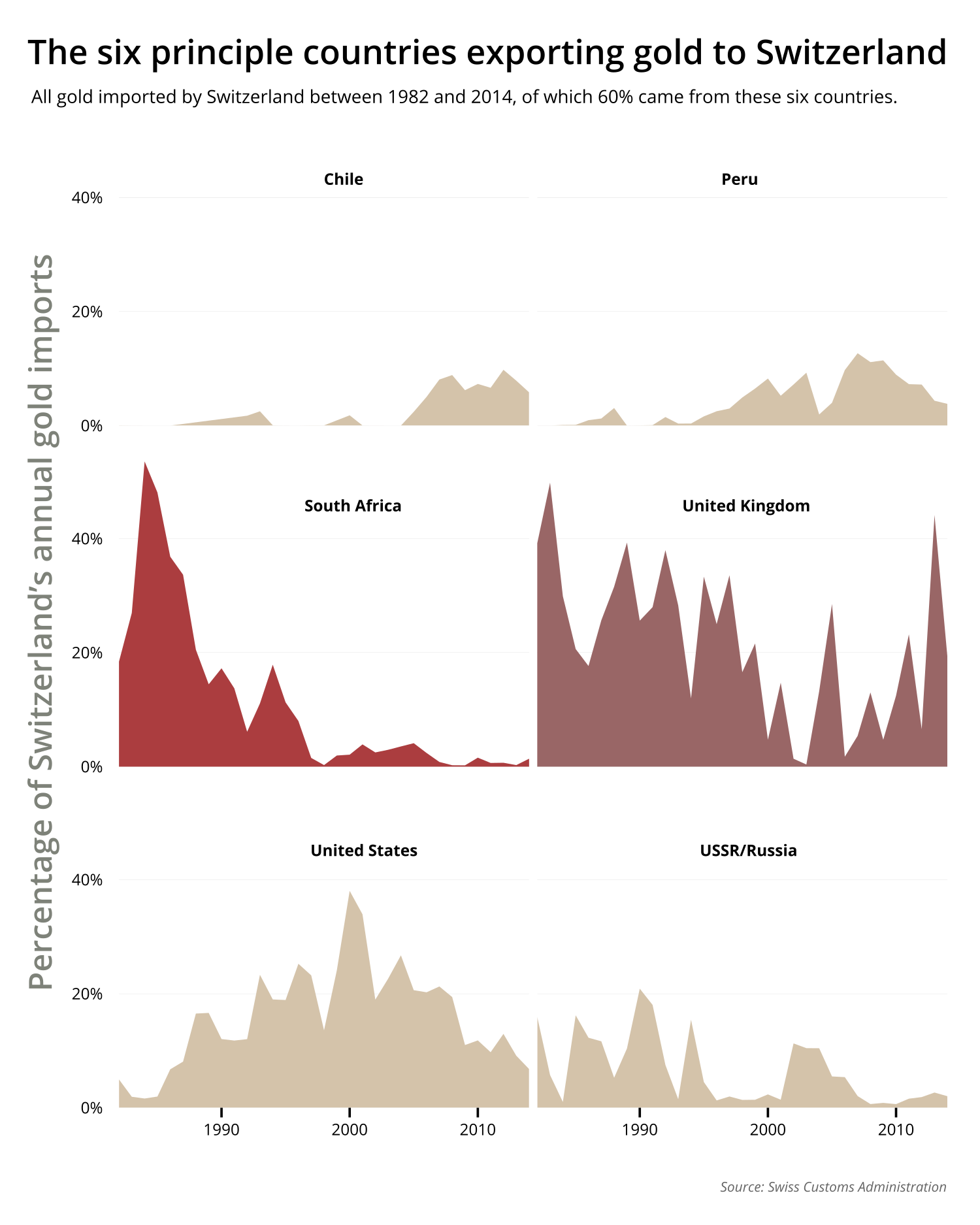
Exports of gold from Switzerland are destined for the main gold-dealing centres: Hong Kong and the United Kingdom, and above all for India, which is the biggest consumer of gold worldwide. Exports to countries such as China and Singapore have also increased sharply in the recent years. On the contrary, it is worth noting that exports have dropped markedly to Italy, which absorbed about 30% of Swiss exports until the beginning of this century (with a peak of almost 340 tonnes in 1998.) In 2013, Switzerland only exported 40 tonnes to Italy.
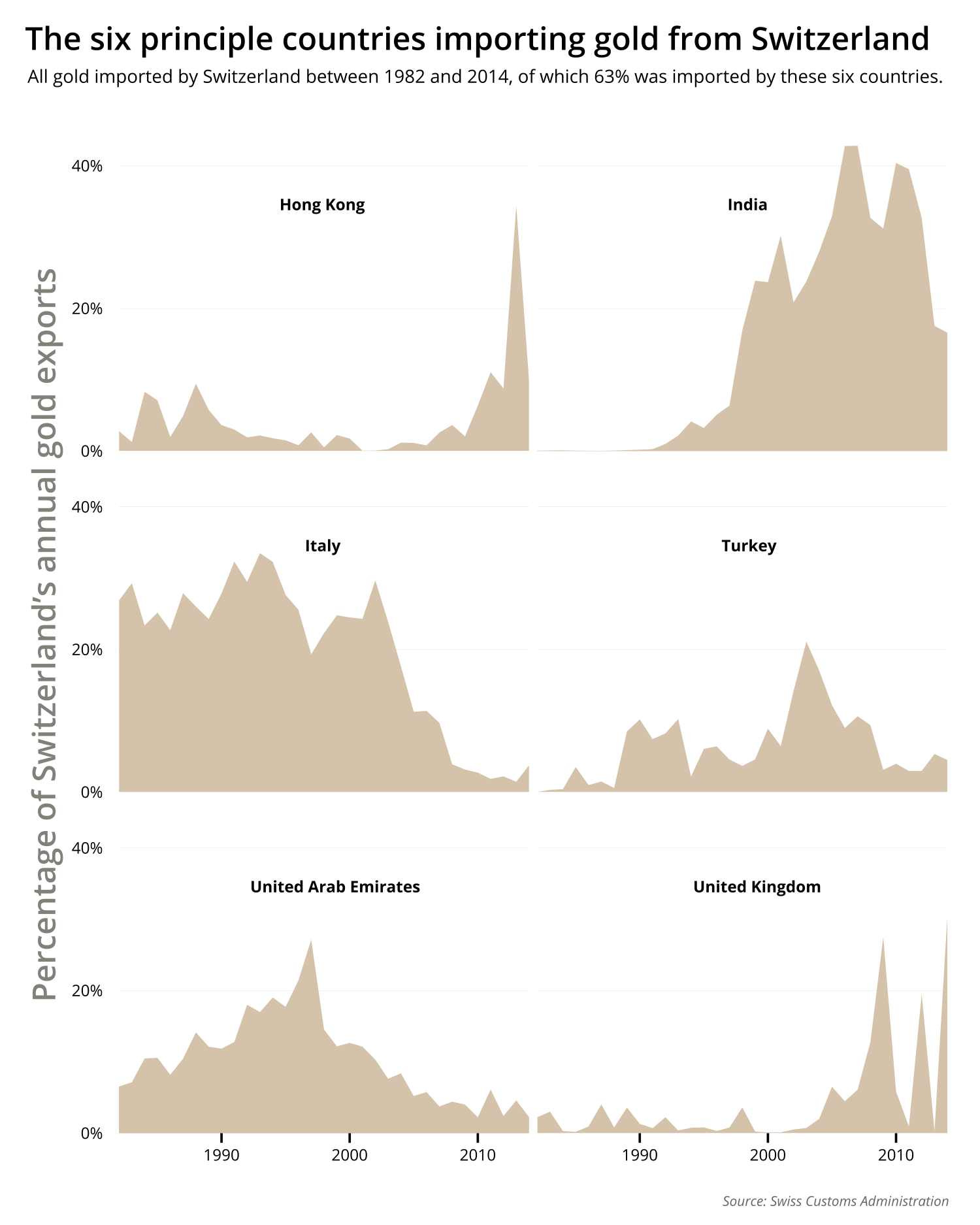
Translated by Catherine Hinkley

In compliance with the JTI standards
More: SWI swissinfo.ch certified by the Journalism Trust Initiative









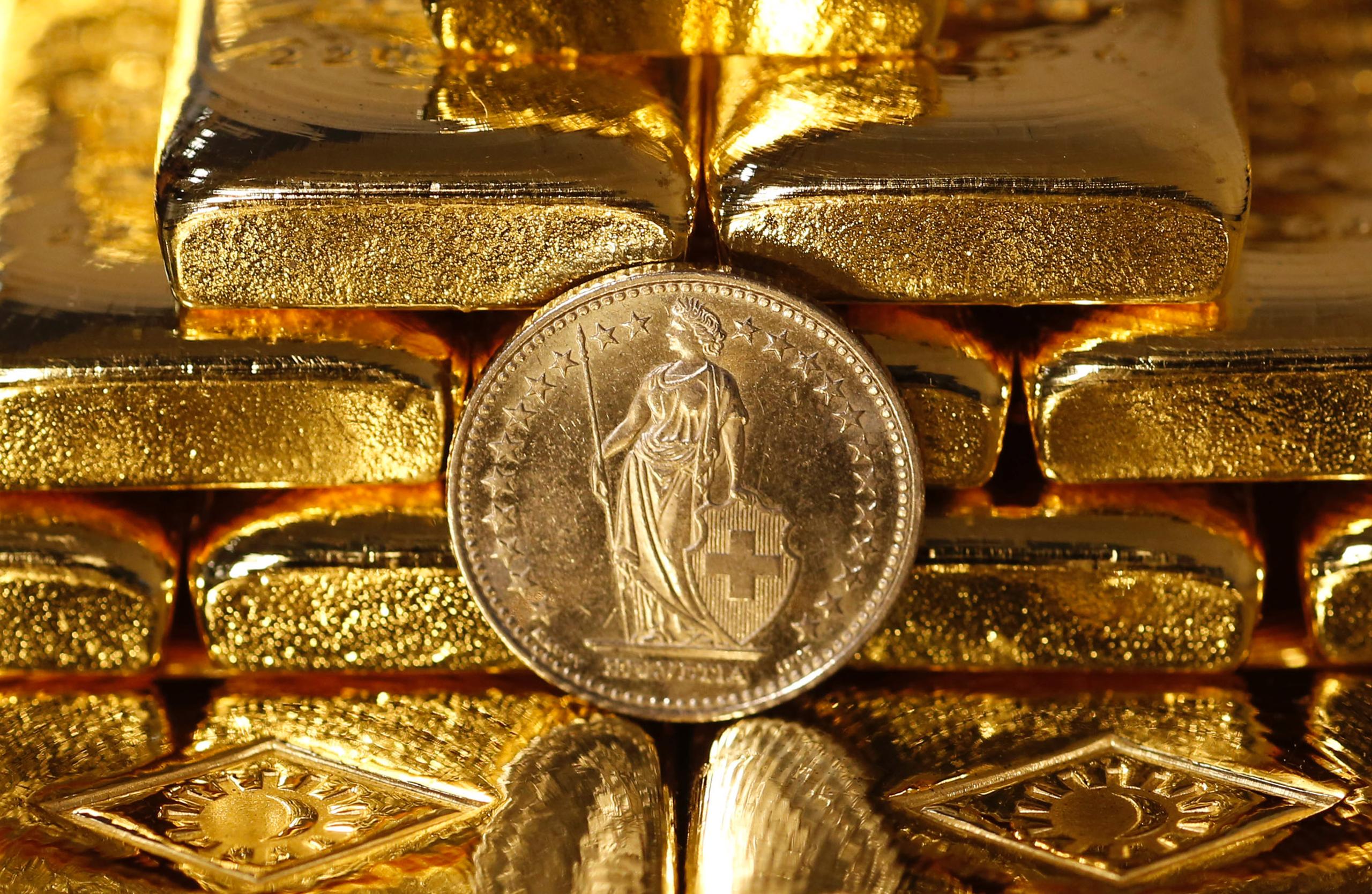


You can find an overview of ongoing debates with our journalists here . Please join us!
If you want to start a conversation about a topic raised in this article or want to report factual errors, email us at english@swissinfo.ch.